What would an ancient Mayan shaman, peering forward in time in some mystical trance, have thought of the three of us, trudging through the jungle with strange rubber skin and heavy tanks of air on our backs?
As we sprouted webbed fins from our feet and dove into the cave opening below, descending below the dark water, the Mayan sage would perhaps have understood that we were spirits on our way into the Underworld.
And so we were, for we were diving in the famous Yucatan cenotes.
Cenote Diving in Tulum
Millions of years ago, the Yucatan peninsula was a coral sea. Uplifted above the water level, the coral turned into limestone. The erosion of water created pockets in the limestone, which joined together and formed the caves, pits, and tunnels that riddle the whole area, and are known as cenotes.
In addition to using them for pure groundwater access, the Mayans thought cenotes had spiritual significance, and often conducted religious rituals there (including sacrifices of humans, animals, or valuable goods).
My wife and I are in the area for a vacation and wanted to explore these special places, above and below the water line.
We dove together yesterday in two cenotes in Tulum, with La Calypso scuba-diving tour company. We met our friendly and knowledgeable French scuba guide, Nicolas, downtown. After selecting and packing our gear and oxygen tanks, we hopped in his truck and rattled off to the nearby cenotes.
The first was known as Gran Cenote, and was well developed for tourists, with a building containing washrooms and changing areas, and steps leading down to a large wooden platform in the cenote for scuba divers and snorklers to assemble their gear.
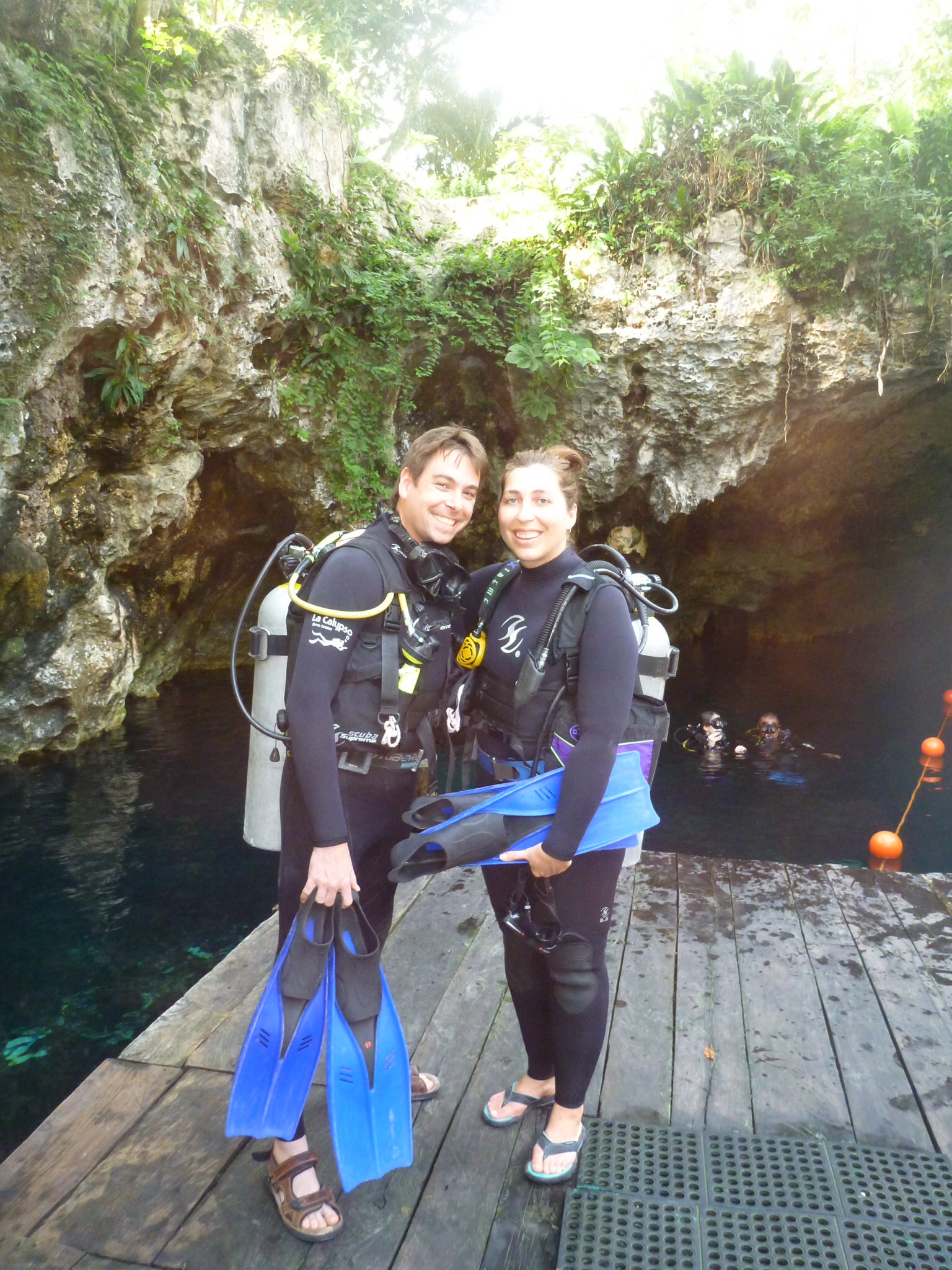
Gran Cenote platform – ready to go!
We checked our scuba gear and did a forward step into the water, then sank slowly beneath it. We followed Nicolas in single file, following along the underwater safety wire into the darkness of the cenote tunnels. Our way was lit only by the torches we carried, and sometimes, stunningly, by pockets of overhead light where the cenote ceiling opened up to the sky.
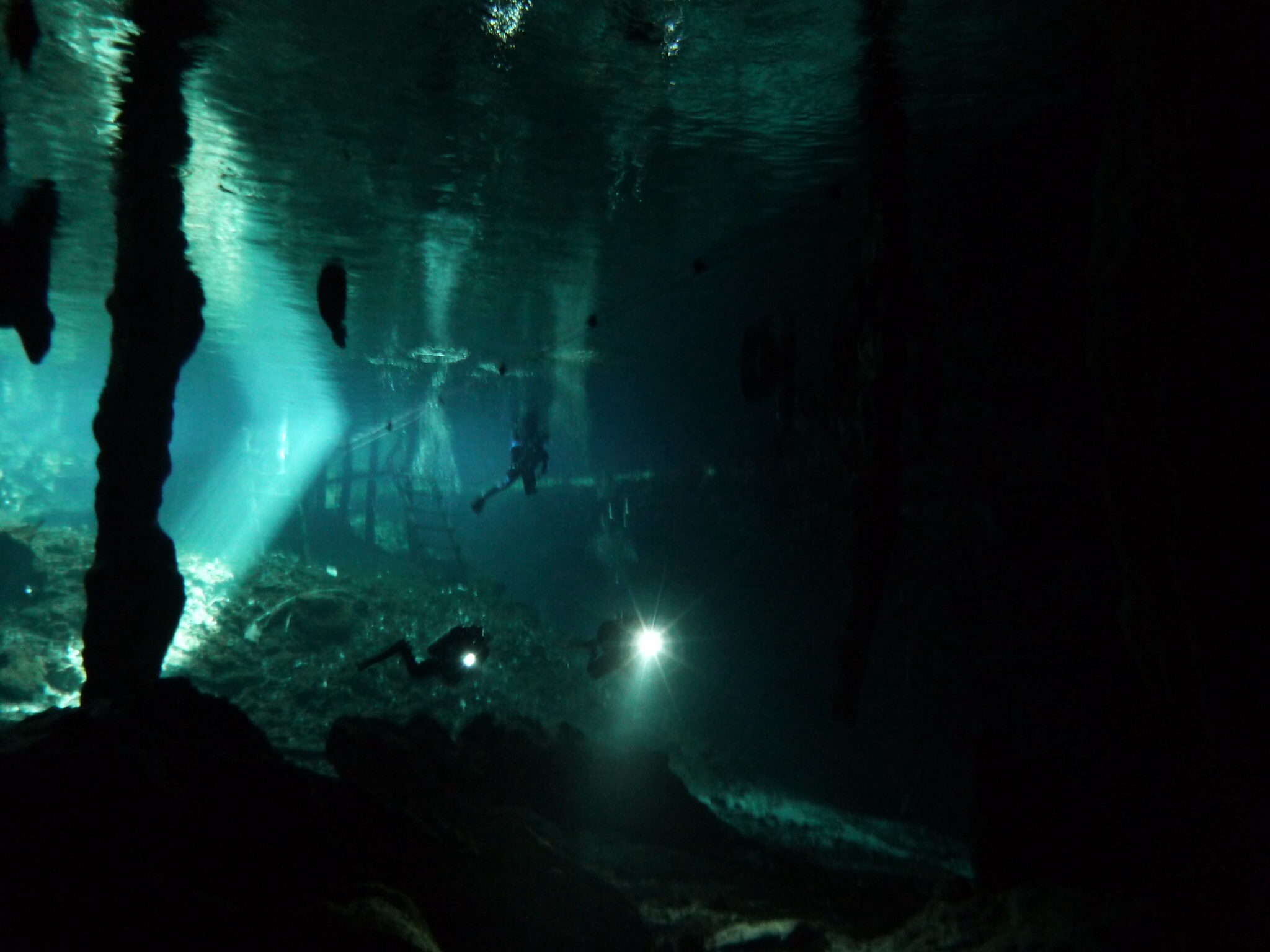
Divers with flashlights at Gran Cenote
The tunnels were mostly empty of life, apart from a few small dark fish. As our flashlights flicked across the stalactites and stalagmites (evidence that these caves were once dry, during the last Ice Age) it seemed at times like we were floating not in water but in space. The formations reminded us a lot of Jenolan Caves in Australia.
Whenever we had a view of the entrance, we would stop entranced at the emerald green light of the opening.
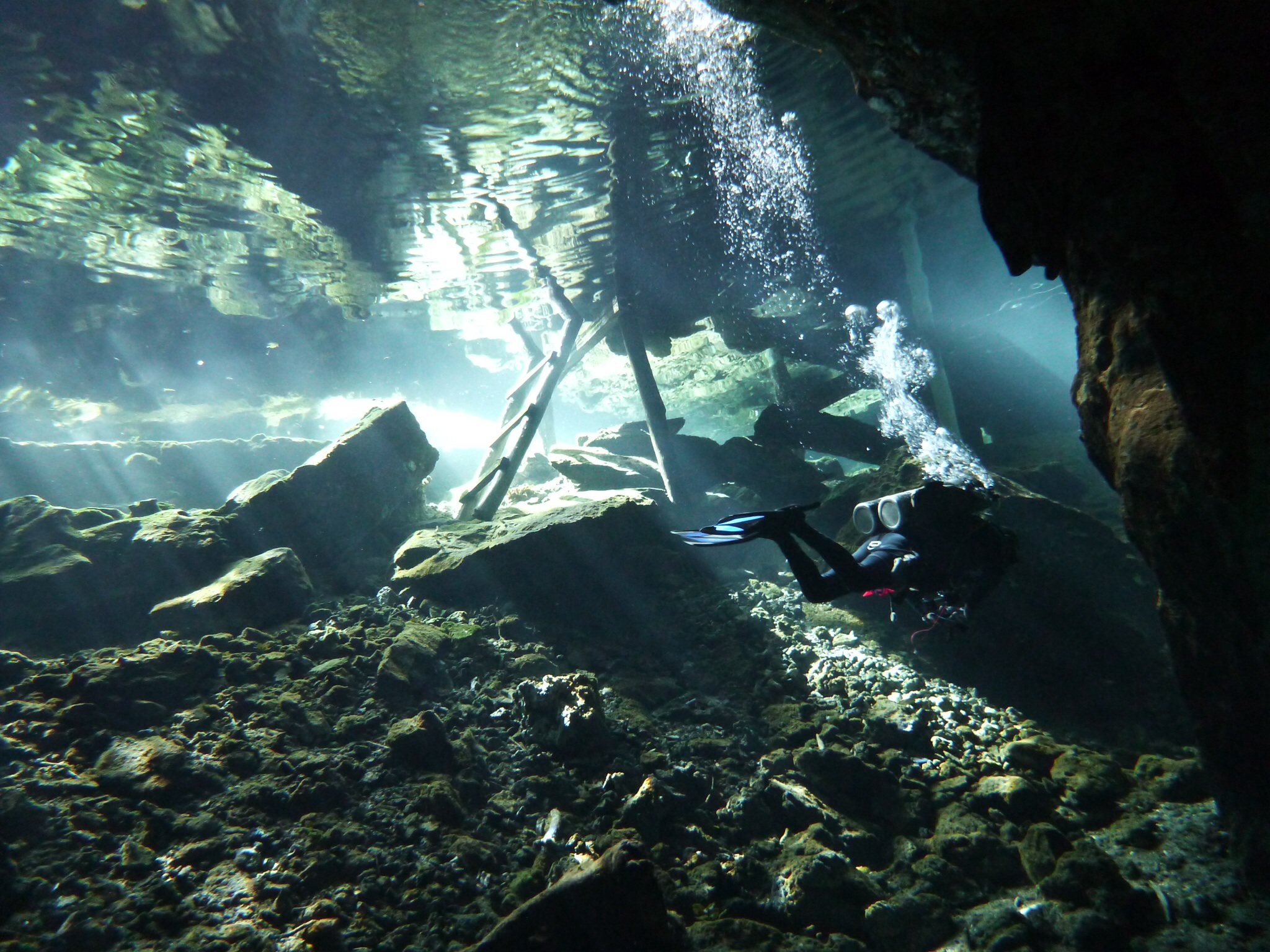
Scuba diver near the exit ladder, Gran Cenote
After about half an hour we had completed our tour of Gran Cenote, and it was time to climb out and visit our second cave of the day.
Temple of Doom
Calavera, Spanish for “Skull”, is also known as Temple of Doom, and was the second dive of the day.
This one was spectacular, for very different reasons from the first.
To begin with, the trudge through the jungle showed us how underdeveloped this cenote was – fine by us. The payment we made to the owner went straight to his family. These cenotes are mostly privately owned, and are a great source of income to the rural Mayan populations of the area.
At the end of the trail is the opening, with only a single wooden ladder leading into it. It looks like Indiana Jones would have used this at one point in his career.
Rather than taking it down, we simply dove in without our flippers. After we dropped ten feet into the water, put our fins on, and checked our equipment, we descended into inky darkness.
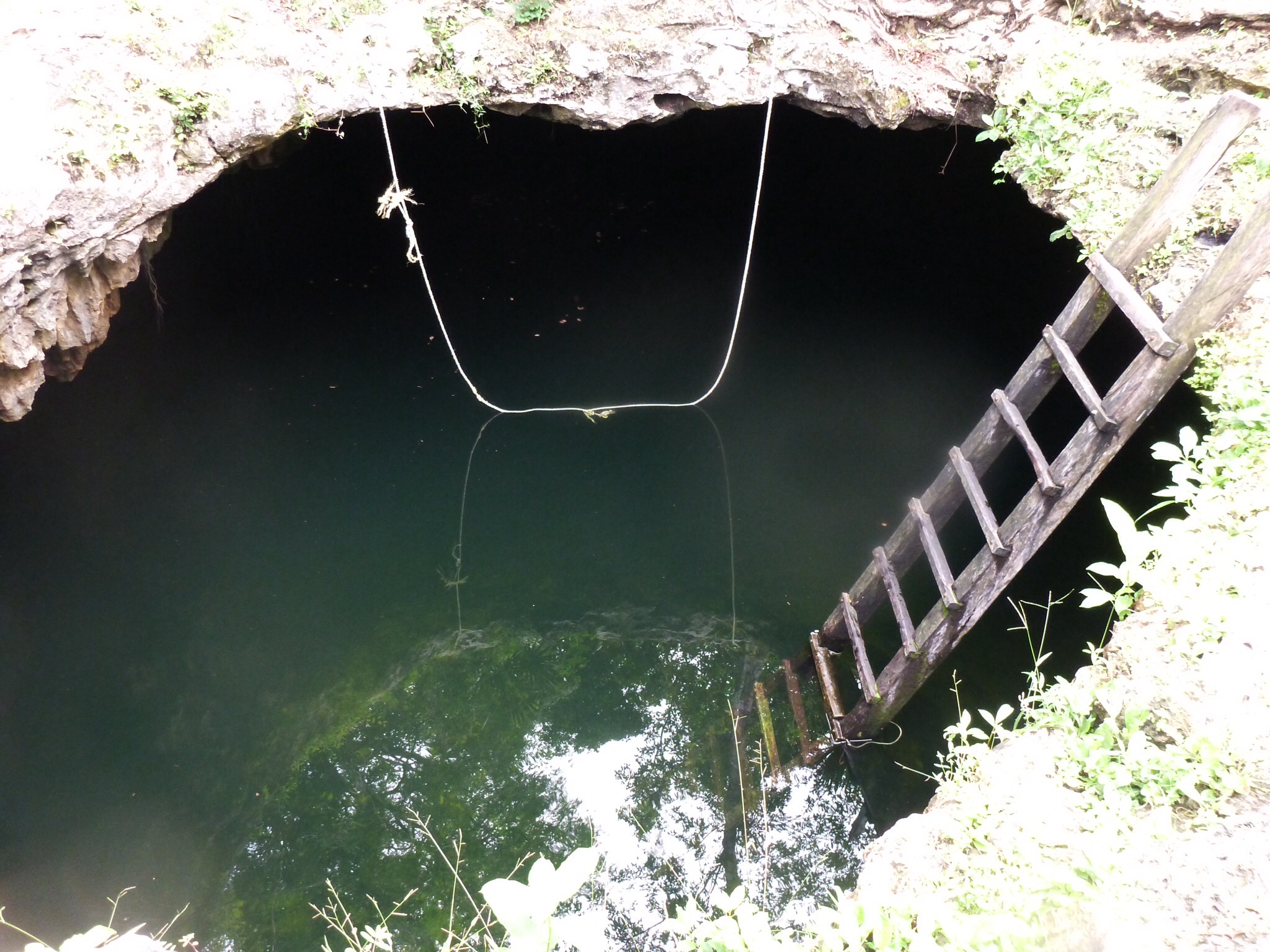
Calavera Cenote – aka the Underworld entrance
This cenote was less obviously impressive, until halfway through the dive, when its real appeal becomes apparent – there is a halocline!
Underwater Laser Show
The freshwater in cenotes often leaches out into the surrounding ocean, and salt water leaches back in. Since salt water is denser than fresh water, in places like Cavalera, two levels of water fill up the tunnels: the lighter freshwater on top; the razor-thin halocline layer; and below it, the heavier salt water.
Strange visual effects occur when diving in a halocline – the diver ahead of you starts to shimmer as he disturbs the salt water. If you raise your head above the halocline, the effect disappears. If you lower it, you are back in salt water.
Looking through the halocline from below, it seems as if you are mere inches away from dry air – when in fact you are still dozens of feet below water.
And, as you shine your lights around the tunnels, you begin to see the precise layer where the two meet. It shimmers in blue stratas, like the laser light show at a rave.
These trippy visual effects are caused by refraction of light against different densities of salt and fresh water.
The diving experience was great fun in both cenotes, and not especially dangerous, as long as you followed safety procedures and stayed along the diving line. If not, you arrived at this grisly sign:
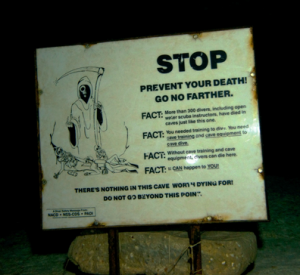
STOP Prevent Your Death – Underwater sign in Cenote
So we obeyed the safety instructions, and return happy and unharmed from the Mayan Underworld.
Valladolid Cenote
The centre of Valladolid, our next travel destination, contains a large cenote, where the locals can enjoy a swim and then a fantastic meal at the restaurant above it (featuring live music from a musician named “La Tucho”).
The water in it seems clear and fresh, although we arrived later in the afternoon and didn’t swim.
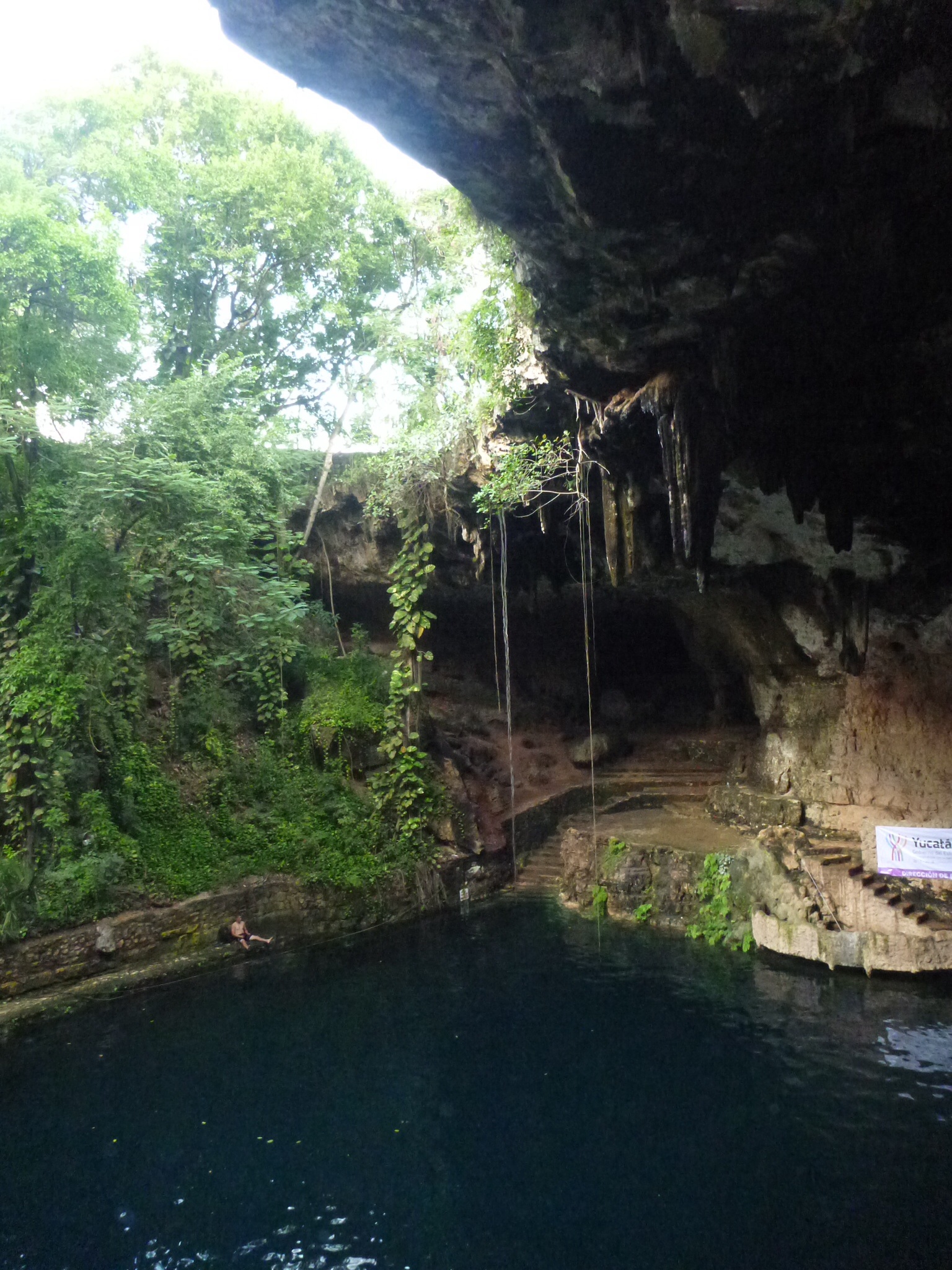
Valladolid Cenote
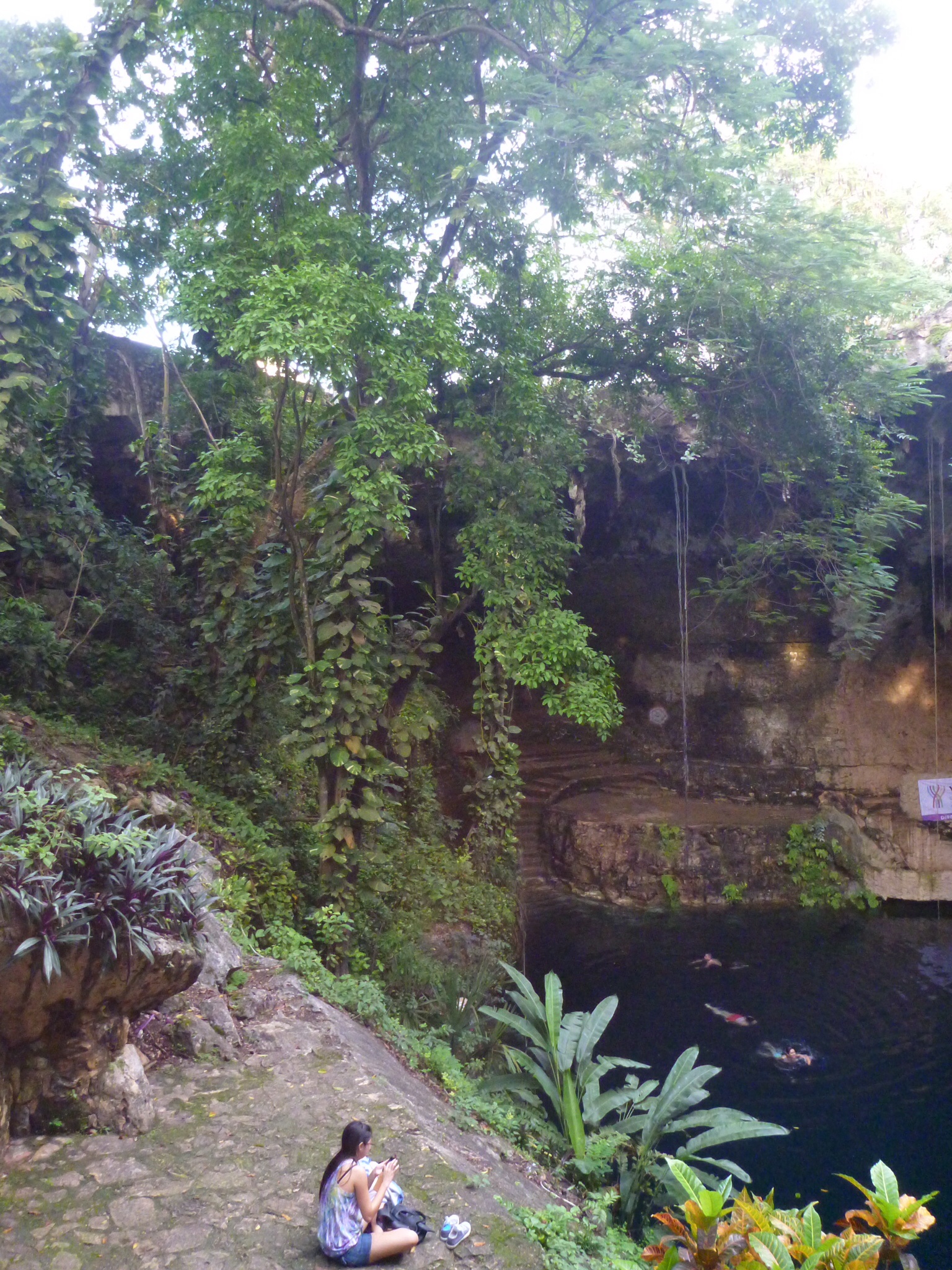
Valladolid Cenote
X’keken and Samula Cenotes
Today we explored some cenotes in Vallodolid, a gorgeous small town deeper in the Yucatan peninsula. These particular ones are large round caves, somewhat open to the air, without any adjoining tunnels. They are about a 70-peso taxi ride outside of town.
We walked around X’keken but didn’t swim in it. It’s a large cave bowl with a central cluster of stalactites and a nimbus of light from a small round opening in the ceiling.
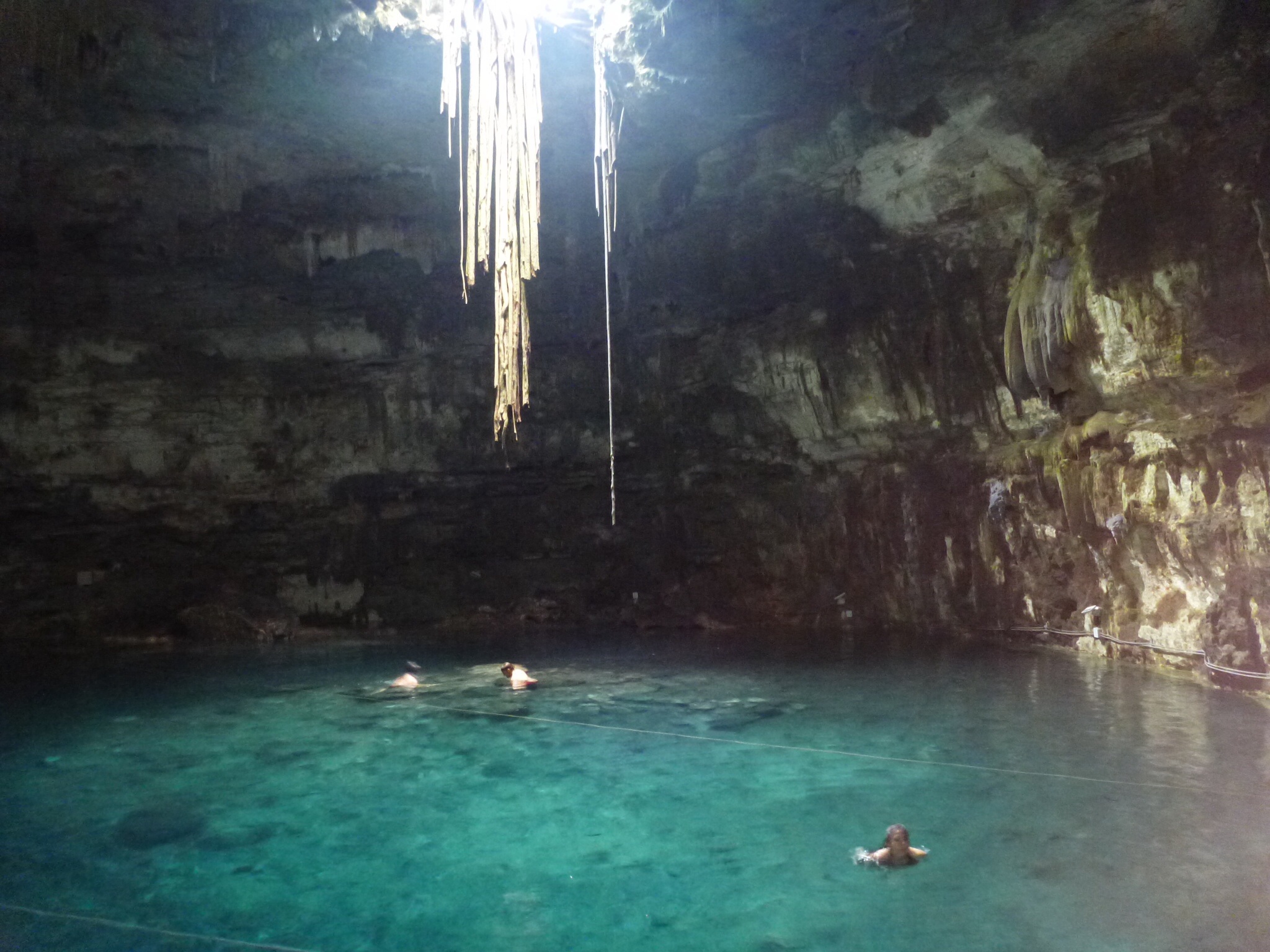
X’keken Cenote
The swimming in Samula was very nice, with cool clear water, hanging tree roots dangling down into the water, and overhead we could hear the chittering of small bats that make their home here.
We were not alone at either cenote, but relaxed along with a fair number of local families.
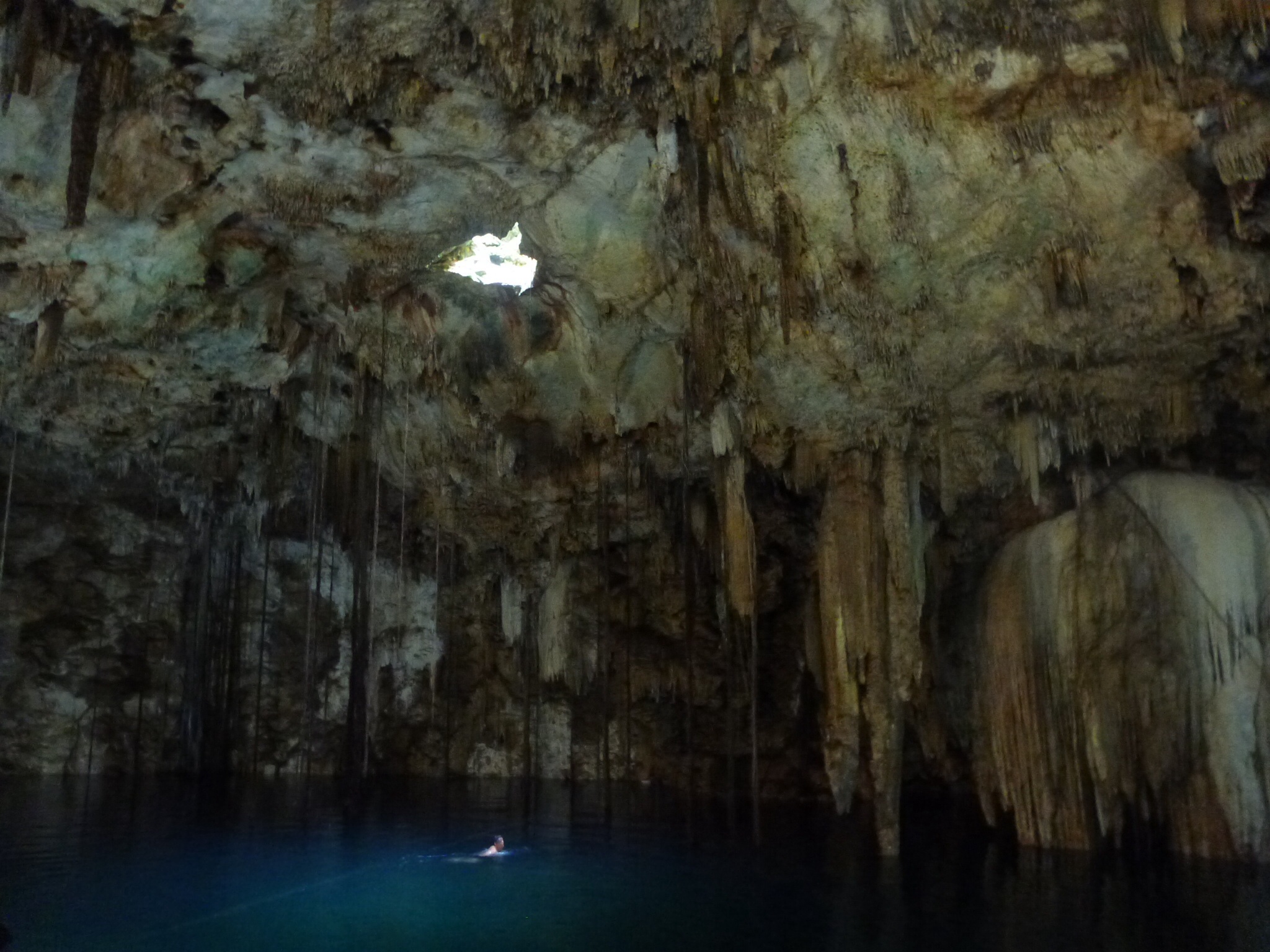
Samula Cenote
The cenotes are special places, and it was lots of fun to explore them, something I don’t think we would get tired of. While exploring we also have the chance to meet and chat with the Mexicans who live in the Yucatan. A kinder, friendlier group of people would be hard to find.
We will definitely be back.



